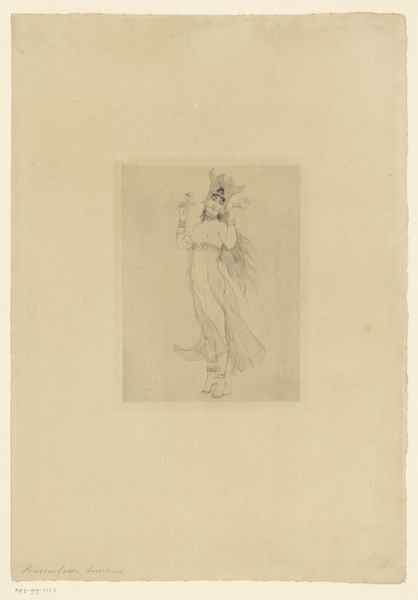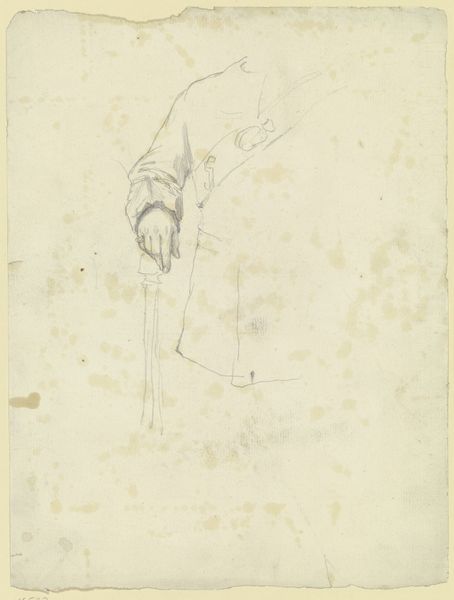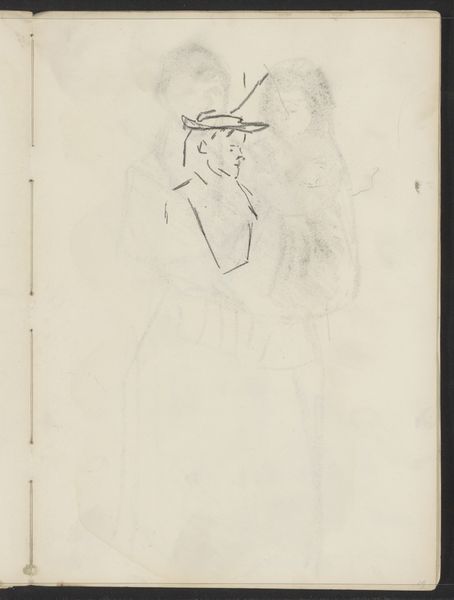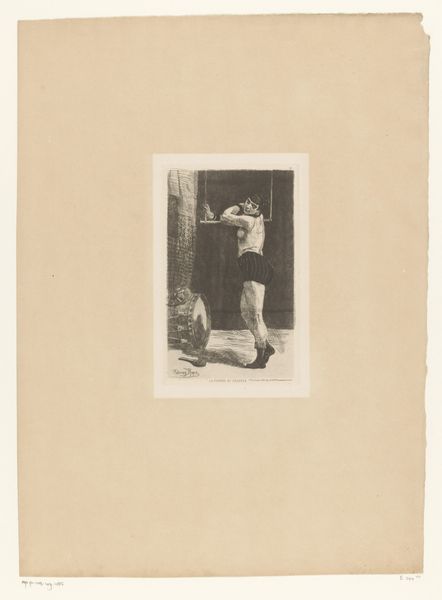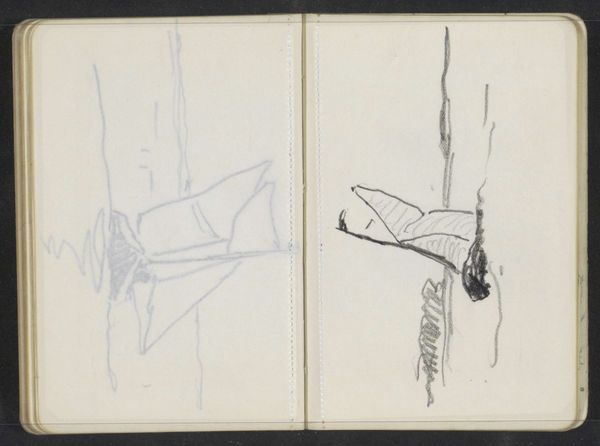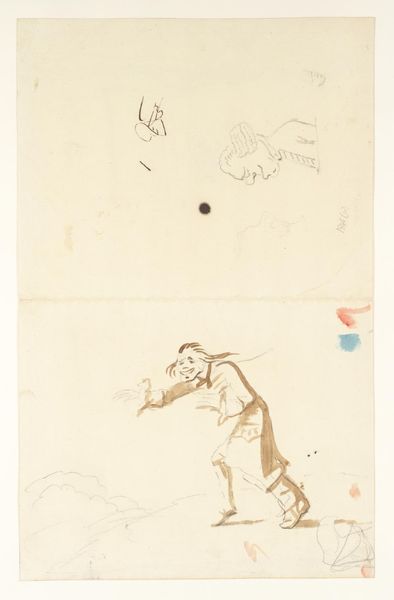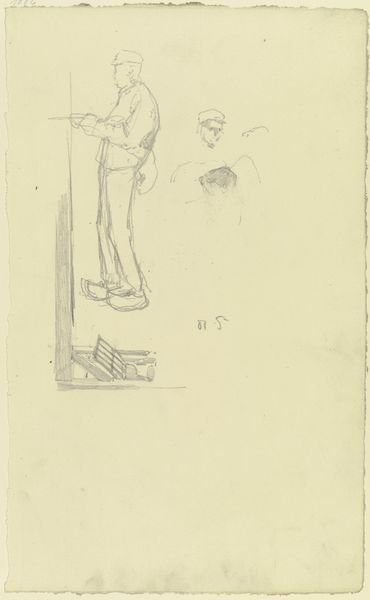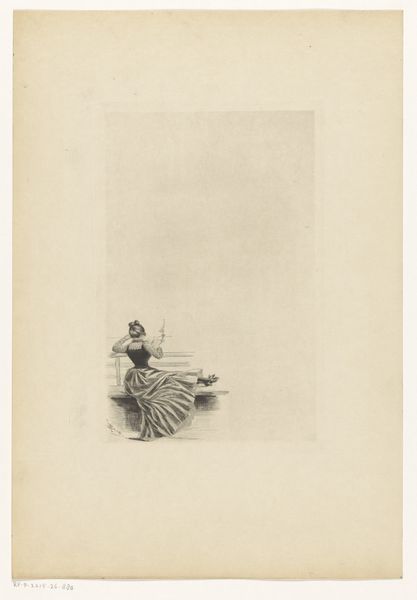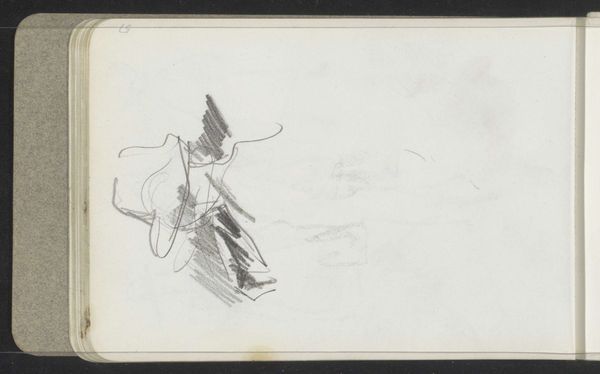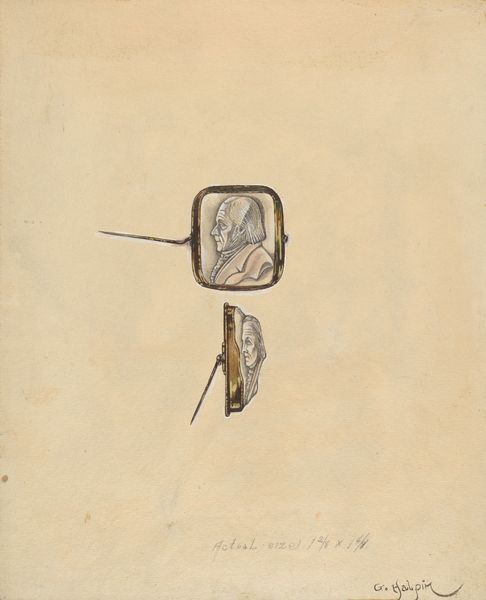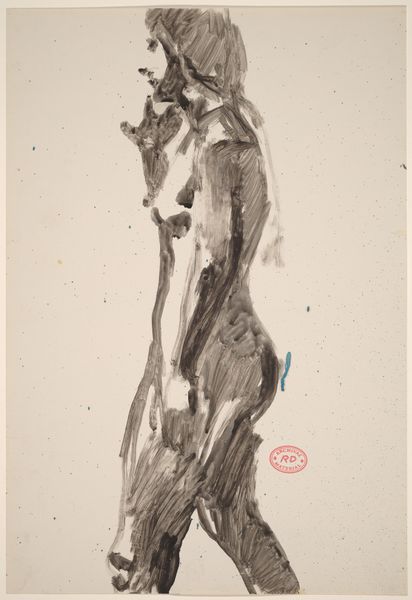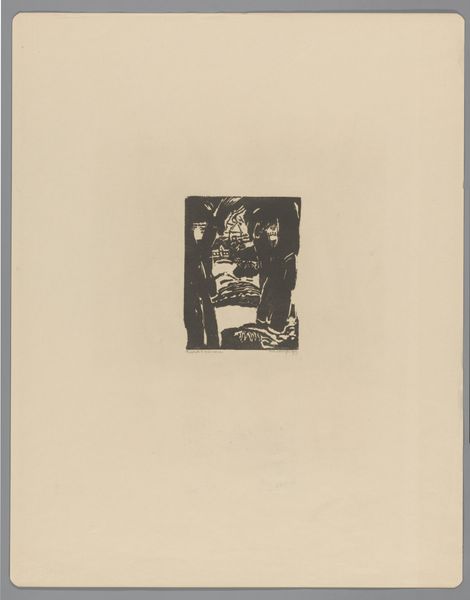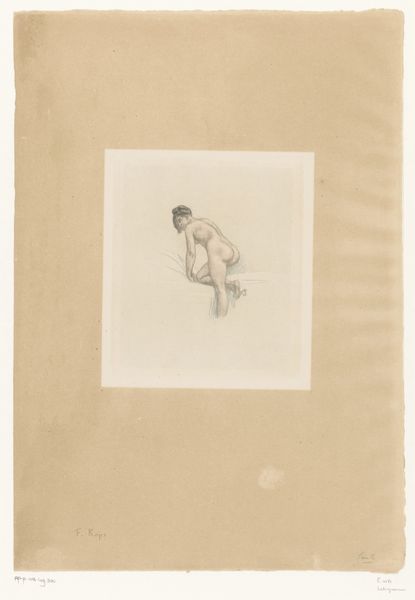
Copyright: Public Domain
Curator: Welcome. Here we have John Elsas’ “16204 ('Der vergötterte Menschenmann …')”, a mixed-media collage and drawing on paper from 1932. Editor: My first impression is one of playful melancholy. The figure, assembled from various fragments, appears fragile and introspective. Curator: Indeed. Observe how Elsas constructs form using stark lines and juxtaposed shapes. Semiotically, the layering creates a sense of depth, but also fragmented identity, very common for Expressionist figuration. The colors, though muted, introduce tension. Editor: I'm drawn to the sociopolitical undercurrents of the 1930s that shaped this piece. Given the rise of totalitarian regimes and increasing social unrest, what does this fragmentation reflect about the individual's place in society? The handwritten inscription feels almost like a defiant statement amidst chaos. Curator: An interesting observation. One could interpret the abstract figure as a representation of the artist’s perception and understanding of the external turmoil. But also consider how Elsas manipulates color relationships independent of any historical narrative. Note the visual harmony produced from yellows with analogous hues. Editor: But can we really separate the aesthetic choices from their historical context? Expressionism itself arose as a response to social alienation and the trauma of war. It’s about more than just visual harmonies—it's about confronting uncomfortable truths about the self and about our society. Curator: Perhaps. Yet Elsas, through the mere application of certain artistic methods of Expressionism allows for an open field of visual reception where there need not exist just a singular contextual reading. The artist’s individual aesthetic gesture generates this abstract and formal interplay in the viewing experience. Editor: It seems impossible to discuss art without understanding something about the state of the world in which they are created. Analyzing art is ultimately analyzing the cultures that make the art possible. Curator: A complex and insightful proposition to be sure, as the art remains, however, always a negotiation between what we bring to it, and what it brings to us. Editor: And it is precisely this interplay of meanings that keeps it alive.
Comments
No comments
Be the first to comment and join the conversation on the ultimate creative platform.
